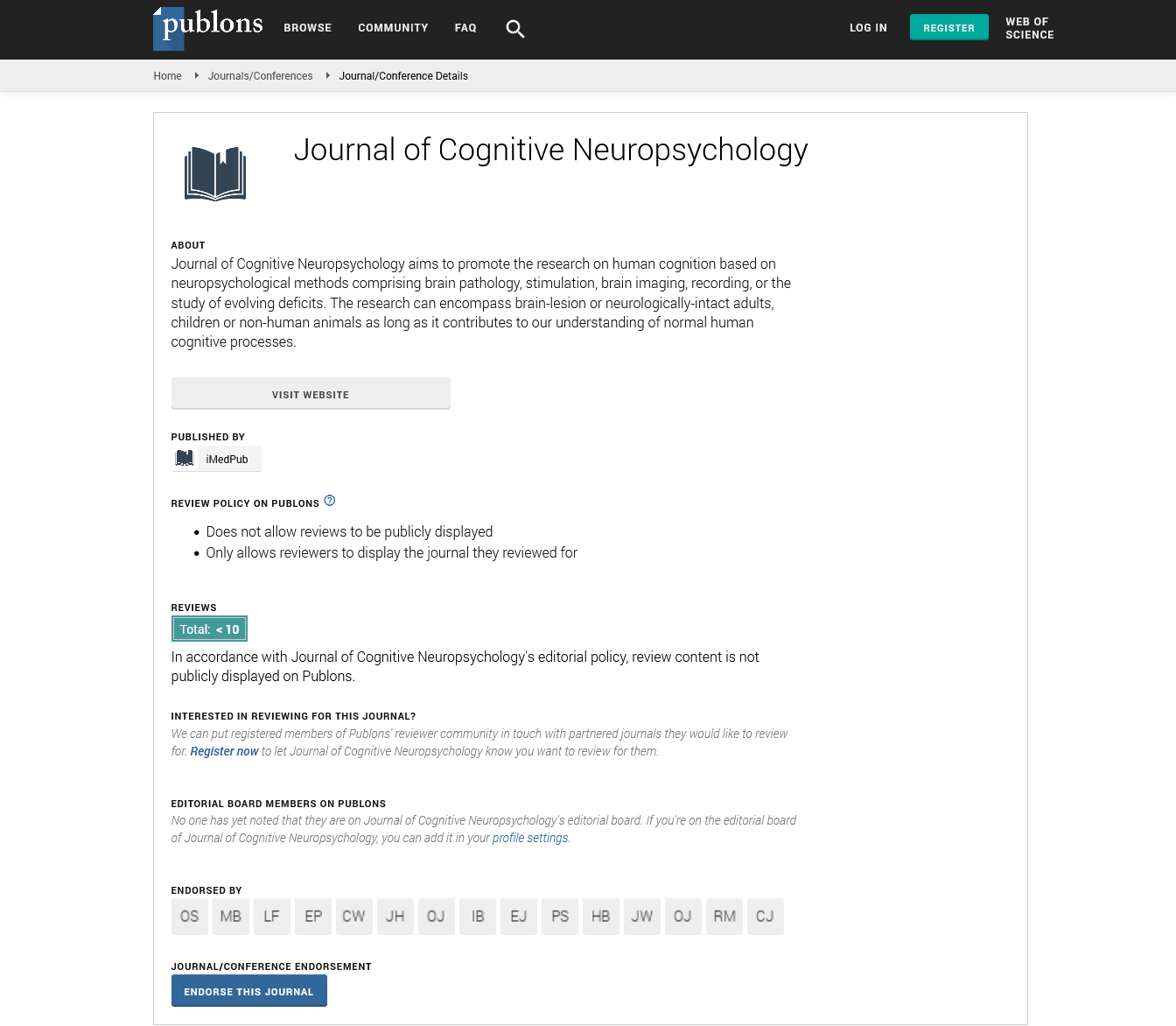Abstract
Cognitive Neuroscience 2020: Dynamic resting state functional connectivity differences between ictal and the pre or postictal phase of migraine- Noboru Ima- Japanese Red Cross Shizuoka Hospital, Japan
Migraine headache is an episodic phenomenon, and patients with episodic migraine have ictal (headache), peri-ictal (premonitory, aura, and postdrome), and interictal (asymptomatic) phases. We aimed to find the functional characteristics of the migraine brain regardless of headache phase using dynamic functional connectivity analysis. We prospectively recruited 50 patients with migraine and 50 age- and sex-matched controls. All subjects underwent a resting-state functional magnetic resonance imaging. Significant networks were defined in a data-driven fashion from the interictal (>48 hours apart from headache phases) patients and matched controls (interictal data set) and tested to ictal or peri-ictal patients and controls (ictal/peri-ictal data set). Both static and dynamic analyses were used for the between-group comparison. A false discovery rate correction was performed. As a result, the static analysis did not reveal a network which was significant in both interictal and ictal/peri-ictal data sets. Dynamic analysis revealed significant between-group differences in 7 brain networks in the interictal data set, among which a frontoparietal network (controls > patients, P = 0.0467), 2 brainstem networks (patients > controls, P = 0.0467 and <0.001), and a cerebellar network (controls > patients, P = 0.0408 and <0.001 in 2 states) remained significant in the ictal/peri-ictal data set. Using these networks, migraine was classified with a sensitivity of 0.70 and specificity of 0.76 in the ictal/peri-ictal data set. In conclusion, the dynamic connectivity analysis revealed more functional networks related to migraine than the conventional static analysis, suggesting a substantial temporal fluctuation in functional characteristics. Our data also revealed migraine-related networks which show significant difference regardless of headache phases between patients and controls.
Author(s): Noboru Ima
Abstract | PDF
Share This Article
Google Scholar citation report
Citations : 8
Journal of Cognitive Neuropsychology received 8 citations as per Google Scholar report
Journal of Cognitive Neuropsychology peer review process verified at publons
Abstracted/Indexed in
- Google Scholar
- Publons
- MIAR
Open Access Journals
- Aquaculture & Veterinary Science
- Chemistry & Chemical Sciences
- Clinical Sciences
- Engineering
- General Science
- Genetics & Molecular Biology
- Health Care & Nursing
- Immunology & Microbiology
- Materials Science
- Mathematics & Physics
- Medical Sciences
- Neurology & Psychiatry
- Oncology & Cancer Science
- Pharmaceutical Sciences
